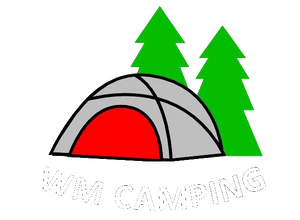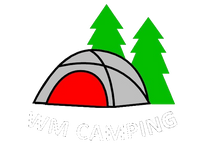How to Reduce Condensation inside my Tent or Awning?
In the event that water has seeped into your tent, it's highly unlikely that your tent has leaked. All of our tents are made to meet the highest standards using top-quality materials and components. The tent is designed to keep the weather at bay, with waterproof fabrics, robust stitching methods, and sealed seams.

First of all, what is condensation?
Condensation is the process by which water vapor in the air turns into liquid as it comes into contact with a surface that is cooler than the air. This process can occur when warm, moist air comes into contact with cooler surfaces such as windows, mirrors, or walls. The cooling of the air causes the water vapor in the air to lose energy and transition from a gas to a liquid state (water), forming water droplets. In the context of camping, condensation can occur inside a tent when warm, moist air from breathing or cooking comes into contact with cooler surfaces such as the tent walls or roof.
How much condensation can form in a tent or awning?
Did you know that a person can produce as much as 1 pint of condensation per night? Therefore, if you have 5 people in a tent, that equates to a possible 5 pints of water within your tent! Moisture can also arise from other sources, such as damp clothes and shoes, cooking, pets, and even the air itself. As temperatures decrease at night, warm air can hold less moisture, causing more moisture to be released into the air. In fact, even without anyone in it, a six-man tent can contain roughly 1 pint of water in the air.
The key causes of condensation inside your tent or awning include:
-
Temperature difference: When the temperature inside the tent or awning is warmer than the temperature outside, moisture can accumulate on the inside surfaces. This is because warm air can hold more moisture than cool air.
-
Camping in Hot Weather: High humidity levels inside the tent or awning can also lead to condensation. When the air is saturated with moisture, any decrease in temperature can cause the excess moisture to condense.
-
Lack of ventilation: Poor ventilation can trap moist air inside the tent or awning, which can increase the likelihood of condensation. This is especially true when there are a lot of people in the tent, as their breathing and sweating can add to the moisture levels.
-
Wet ground: If the ground underneath the tent or awning is wet, it can increase the humidity levels inside. The moisture can seep through the floor of the tent or awning, adding to the overall moisture levels inside.
-
Cooking inside: Cooking or boiling water inside the tent or awning can add a significant amount of moisture to the air, which can contribute to condensation.
Examples of Condensation
-
Water droplets on the tent walls or roof: When warm, moist air inside the tent comes into contact with cooler surfaces, such as the tent walls or roof, the water vapor in the air condenses and forms water droplets.
-
Dampness or moisture on the tent floor: Condensation can also cause dampness or moisture to accumulate on the tent floor, especially if the tent is not properly ventilated.
-
Wet sleeping bags or clothing: If moisture accumulates inside the tent, it can also cause sleeping bags, clothing, and other gear to become damp or wet.
-
Water pooling at the base of Airbeams: In air tents, condensation can also accumulate at the base of the Airbeams, leading to water pooling.
-
Dampness or moisture on the tent poles: In pole tents, condensation can also accumulate on the poles, leading to dampness or moisture on the tent poles.
How to stop condensation?
It is unlikely that you will stop condensation building up in your tent or awning entirely but here are a few tips that will help you reduce it:
Choose the right tent for the climate you're going to be camping in.
For example, if you're camping in hot climates like the South of France then a Polycotton tent may be the way to go.
Polycotton Tents - These tents are made from a blend of cotton and polyester fabric, which allows them to breathe better than 100% polyester tents. This feature makes them a popular choice for many people. Unlike polyester tents, which do not breathe, polycotton tents are more climate-friendly and less likely to experience condensation issues. They are suitable for use in both hot and cold weather conditions.
Poled Tents - Poled tents are less prone to condensation compared to those with internal Airbeams, as the poles are typically external to the tent. In contrast, Airbeams tend to attract condensation from the air, leading to more moisture inside the tent.
Mesh Panels
IF YOU HAVE MESH PANELS, USE THEM. Mesh panels on doors or internal windows are beneficial for reducing condensation in tents. They allow the tent to breathe and promote airflow, which can prevent excess moisture buildup. However, some manufacturers may reduce the number of mesh panels to cut costs and lower the price of the tent. Cheaper models may have less mesh, resulting in increased condensation inside the tent. It is ideal to choose a tent with mesh ventilation on each doorway to ensure maximum airflow and reduce condensation.

Ventilation Points
Adequate ventilation is crucial for tents, and all of our family tents have ventilation points either below the windows or at the rear of the inner tents. It's beneficial to choose a tent with plenty of mesh ventilation, as this ensures proper airflow throughout the tent.

Looking to prevent condensation in your tent? Here are some effective tips for a dry night!
-
Ventilate your tent - A good airflow can reduce internal humidity and prevent condensation. Make use of low and high venting options and keep them open. Leave the upper and lower sections of the door open, while keeping mesh sections fully zipped. Ensure vents at the rear of the tent are fully open, and not obstructed by bags or sleeping bodies.
-
Store wet items outside - Keep towels, boots, waterproofs, swimming trunks and sweaty clothes outside the tent. Use an awning, tarp or hub for storage.
-
Avoid touching the sides - Pressure on tent walls can cause water to seep through. Keep bags and other items away from tent walls, and be mindful of condensation collecting at the foot of AirBeams.
-
Never cook inside - Cooking releases large amounts of moisture into the air, increasing condensation. Avoid cooking inside the tent for safety reasons too.
-
Turn off heaters - Warm air holds more moisture, so heating the tent will only increase humidity. Warm yourself up with appropriate clothing and sleeping bags instead.
-
Pitch in a naturally breezy spot - Sheltered areas generate more condensation. Pitch your tent where vents align with the prevailing winds.
-
Don’t pitch too close to water - Water sources increase humidity. Pitch your tent a little further away to reduce condensation.
-
Pack spare towels - In some weather conditions, condensation is difficult to avoid. Use the above tips to reduce it, and pack a spare towel to wipe it away.
Video on Condensation by Vango

